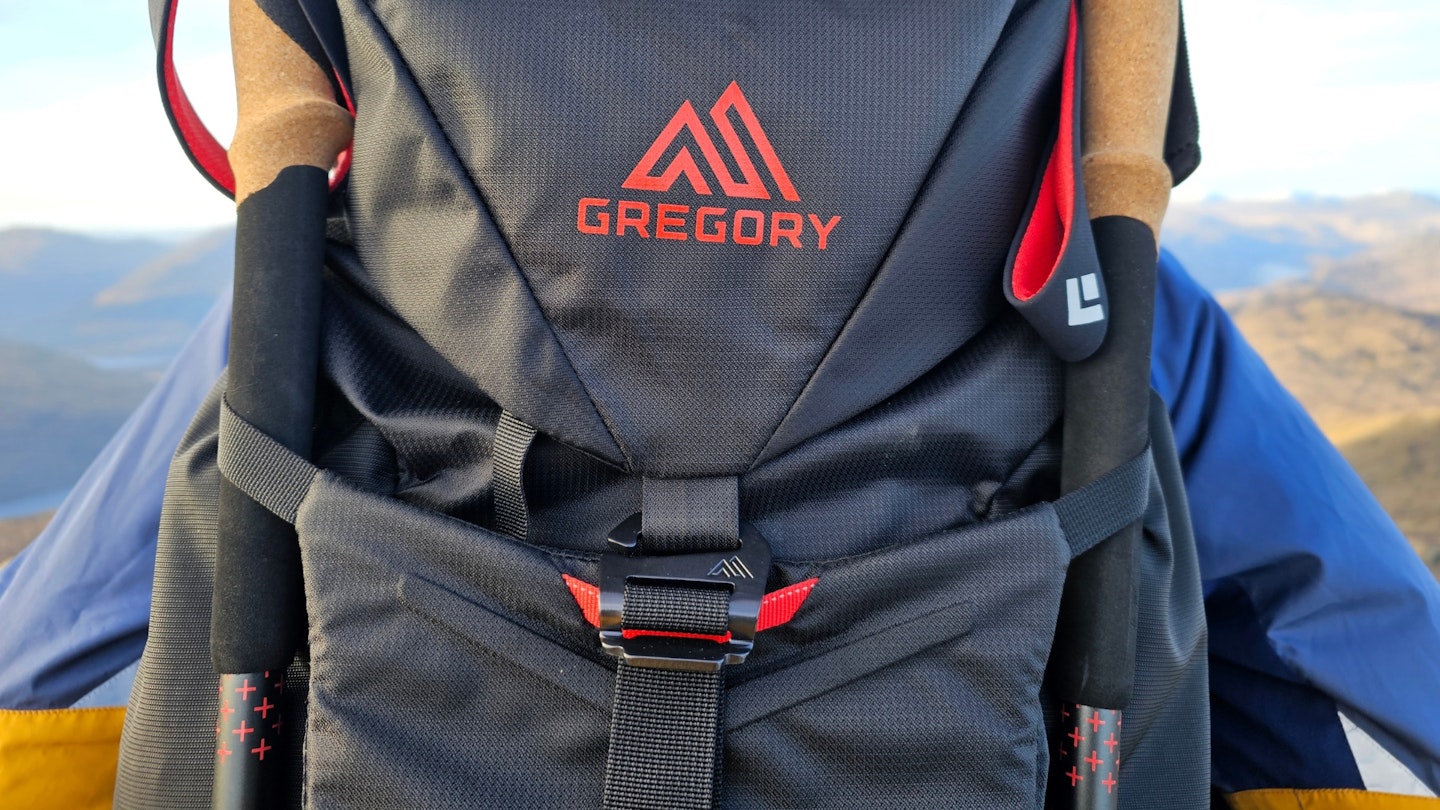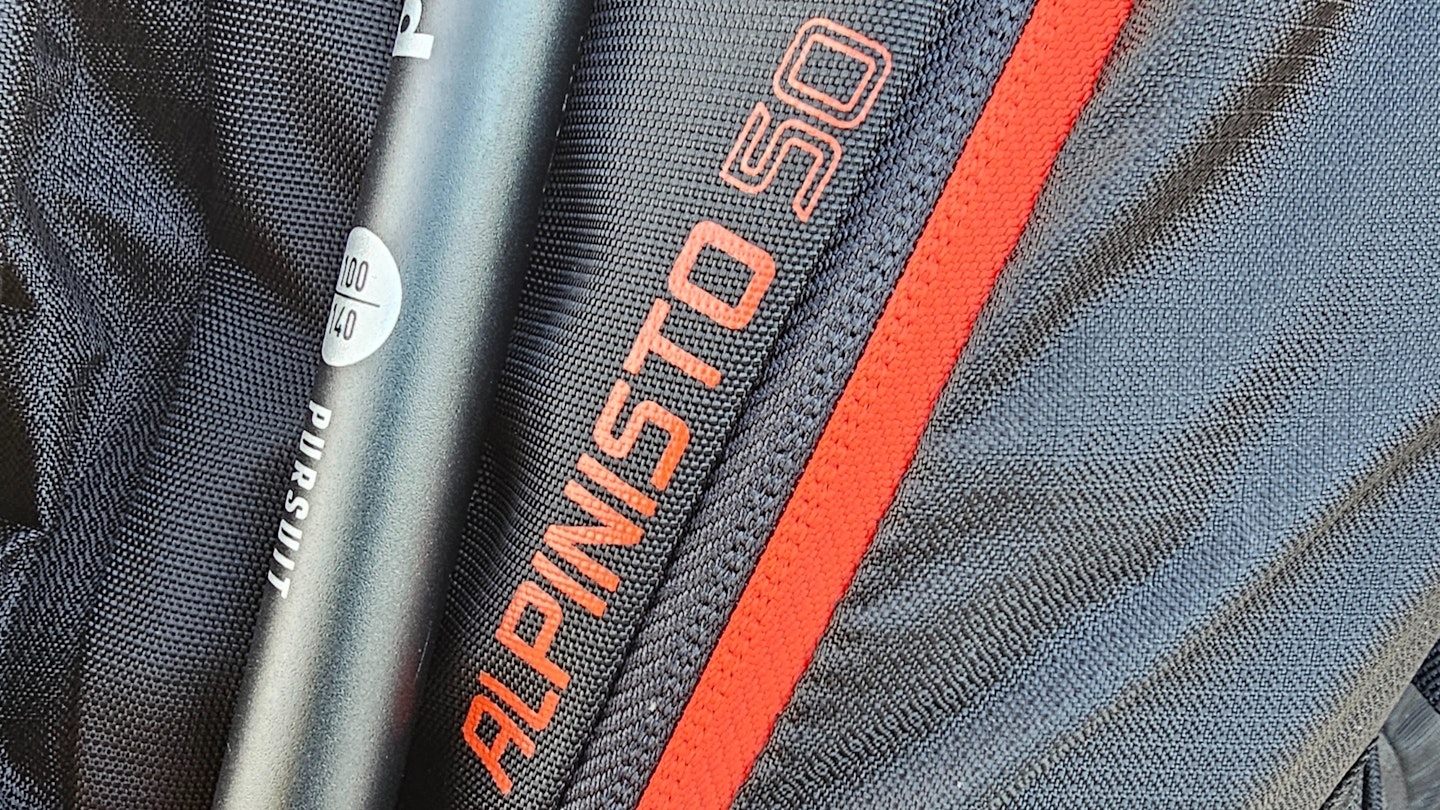Boasting a cavernous 50-litre capacity, the Gregory Alpinisto 50 is clearly a decent load carrier, and it's one that lends itself to winter adventures. But is it one of the best hiking rucksacks around? It's time to find out...
Gregory is a backpack specialist. The brand was founded in 1977 by Wayne Gregory in San Diego, California, and has become of the USA’s top outdoor rucksack brands. Stateside, it vies with industry leader Osprey as a heavyweight of the hiking, trekking and backpacking product categories.
Wayne Gregory's fundamental starting point was that great packs should be worn, not carried. As such, he pioneered new suspension systems that move with the body and paid close attention to fit for both men and women.
The brand was one of the first to offer gender-specific packs, and more recently has also introduced a plus-size range to suit hikers with different body shapes.
The Alpinisto is part of Gregory’s more specialist Alpine & Ski category. It currently comes in two sizes – 35 and 50 litres – though there are also stripped-down Alpinisto LT models in 28 and 38 litre volumes.
The biggest 50L version sits at the top end of our 40-50 litre ‘sweet spot’ for winter hillwalking and mountaineering, which means it would also be a viable option for overnight wild camps or even shorter backpacking trips in the hills and mountains.
Pros
- Tough and weatherproof
- Practical and versatile
- Secondary access to main compartment
- Excellent range of torso lengths
Cons
- Not the lightest
| RRP: | £220 / $239 |
| Volume: | 50L |
| Back length sizes: | S/M, M, M/L, L (unisex) |
| Main body materials: | 210D high tenacity nylon and 630D high density nylon |
| Base materials: | 630D high density nylon with 210D nylon reinforcement layer |
| Weight: | 1.6kg / 3 lbs 8 oz |
Design and features
This is a true mountain monster. The Alpinisto 50 is big and burly, with the ability to hump more stuff than any other pack in our 2024-25 winter packs group test.
This makes it a particularly good choice for guides or other mountain professionals who might be carrying additional equipment like group shelters or a big first aid kit.
Even when fully laden, however, the Alpinisto 50 maintains the tall, slim profile that is typical of a classic alpine pack. It also follows the traditional top-loading design, with a double drawcord collar and a floating lid that fastens with a single metal ‘G-hook’-style buckle.
You also get secondary access to the main compartment via a long, two-way side zip. This zipper is angled and extends all the way to the top of the pack, so you can open it right out for easy loading. It’s a great feature.
Inside the main body, there’s a stretch sleeve for a hydration bladder and a removable 43” x 10” (110cm x 25cm) foam sit/bivvy mat, which can be spread out on wet or frozen ground at rest stops – or if you’re benighted in an emergency.

There are dual compression straps on each side of the pack, as well as lower ski holders. One side also has a lower wand pocket for securing the tips of trekking poles or an avalanche probe.
The front panel has a stiffened front pocket, with metal toggles for securing ice axes, as well as a central pick guard and additional buckled webbing straps.
Build quality is extremely good, with tough ripstop fabrics employed throughout. The main body is made from 210D high-tenacity nylon and the base is 630D high-density nylon, with a 210D nylon lining for reinforcement.
As a result of its size, feature-laden spec and tough build, the Alpinisto 50 is not the lightest pack around. It tips the scales at 1.6kg, which puts it up there with the equally tough Berghaus MTN Guide 45 as the heaviest pack in our recent test.
Still, for its volume, that isn’t ridiculously heavy, and if you do want to save some weight, the pack is strippable. This means the lid, hip belt, inner bivvy pad and even the internal aluminium frame can all be removed, which takes the pack down to a little under 1.3kg.
Harness and back system

As noted up top, Gregory is a pack specialist. The brand makes packs; nothing else. It’s also built its reputation on carrying comfort and fit. So as you might expect, the Alpinisto 50 excels in both regards.
In fact, this is one of the few technical mountain packs on the market to come in a wide range of back/torso lengths – four sizes in total, which ought to ensure all users can enjoy a great fit.
The back system is built on a chunky internal wire frame with a perforated plastic framesheet, ensuring excellent rigidity and good load transfer to the hips.
The back panel consists of moulded diamond-patterned foam, which is contoured to fit the natural curvature of the spine and gives good lumbar support.
Shoulder straps are decently padded but have a pronounced taper to ensure good freedom of arm movement. The padded hip belt is far more robust and supportive than most, though it can be removed for climbing if necessary, leaving just a simple webbing waist belt.
Hillwalkers will certainly want to keep it though, not least because it has a handy zippered hipbelt pocket on one side, plus a gear loop on the other.
Pockets and storage

As is typical of Gregory packs, the Alpinisto 50 has plenty of additional storage. In addition to that roomy main compartment, there’s a stiffened front crampon pocket, a single side wand pocket and two zipped pockets in the lid.
The top lid pocket is deep enough to fit winter gloves, goggles or sunglasses and a head torch, while the inner lid has a handy key clip.
You get another zippered pocket on the hip belt, too, which is pretty standard on a hiking or backpacking rucksack, but fairly unusual for an alpine pack. Winter hillwalkers will doubtless appreciate it though.
Performance and comfort
Along with the Rab Ascendor 45:50, this was the most comfortable pack to carry of all those we tested in our 2024-25 winter packs group test. But the Alpinisto 50 wins overall, because unlike the Rab it comes in multiple back lengths – so it should fit virtually everyone.
Obviously, a simple moulded foam back panel will never offer the same plush padding or ventilation as the elaborate systems you get on many hiking or backpacking rucksacks, but for an alpine/mountain pack, the Alpinisto 50 is remarkably comfortable, even with a heavy load.
It's tough to fault when it comes to overall performance on the hill either. It works particularly well as a winter hillwalking pack. It’s a big old beast, and for some it might even be too large (in which case, take a look at the Alpinisto 35), but this makes it easy to cram all your winter kit inside.
The tough front pocket is perfect for stashing crampons, while the side access with its extended two-way zip ensures it’s easy to grab extra layers or an insulated flask. Chunky buckles are easy to operate even with big, bulky gloves. All in all, it’s a very practical and versatile bit of kit.
Sustainability

The Alpinisto 50 pack contains no recycled fabrics but employs tough materials, including 210D high-tenacity nylon and 630D high-density nylon. This gives increased durability, effectively increasingly the product’s sustainability through longevity.
In addition, Gregory also offers a limited lifetime warranty (to the original purchaser) on defects in materials or workmanship. If your pack breaks, they’ll fix or replace it.
Gregory has also transitioned away from durable water-repellent treatments that contain PFCs, so all its products are free of the so-called ‘forever chemicals’ that accumulate in ecosystems and the environment.
The brand also states that 50% of all its hardware and buckles have been converted to bluesign-approved sources.
Packaging is made from 99% recycled polybags, while hangtags are made from low-impact certified recycled paper and recycled craft paper.
The Alpinisto line is also one of Gregory’s product collections that utilises the brand’s Life Cycle Assessment (LCA) tool to calculate the environmental footprint of the energy used and the impact generated from the entire lifecycle of the product.
This is measured in six key categories: carbon footprint (Greenhouse Gases), acidification (negative effects on soil and water), water pollution (Eutrophication), smog formation (Ozone Creation), primary energy demand (total extracted from the earth), and blue water consumption (net intake and release of water across the life of the product).
This particular pack in made in the Philippines, by a supplier that adheres to Gregory’s Ethical Charter and Social Compliance Program. Factories are audited by third-party independent auditors and are also Worldwide Responsible Accredited Production (WRAP) certified.
Price and competition
At £220 ($239), this was the most expensive rucksack in our 2024-25 winter packs (40-50 litres) group test. It was also the heaviest (just), but also – to be fair – the biggest in terms of both nominal volume and real-world carrying capacity. It really can swallow a lot of gear.
The most obvious competitor in this alpine/mountain category is probably the Osprey Mutant 52, which is fractionally lighter than the Gregory Alpinisto 50 and also £25 cheaper.
The Osprey carries just as well, but the Gregory has a much better range of features and is therefore a more versatile pack.
The other stand-out pack in this category is our overall best in test winner for 2024/25, the Mammut Trion 50. It’s not quite as comfortable as the Alpinisto 50, and doesn’t have the same range of torso lengths, but it still carries well, even with a big load.
It also has lots of great features, including a practical front pocket and secondary access to the main compartment via a zip-around back panel.
Verdict
The Gregory Alpinisto 50 is a big and burly load-lugger with great fit and carrying comfort, plus some very practical and versatile features. It’s just a shame it’s not a fraction lighter.
For more winter pack reviews, see our list of the best mountaineering packs.
Shop this product
About the author

Matt Jones is a freelance journalist based in the heart of Snowdonia National Park, he’s a vastly experienced gear tester and self-confessed outdoor kit geek.
Matt’s been one of our main gear testers for the last couple of years and is the first person we call with any complicated kit queries that need in-depth and forensic analysis.





